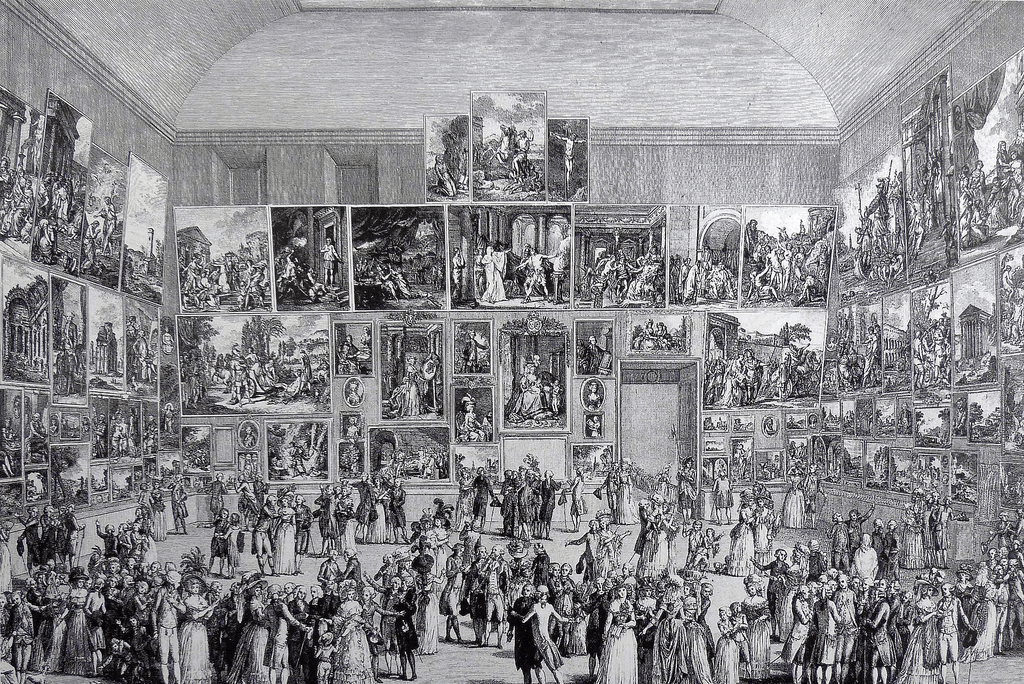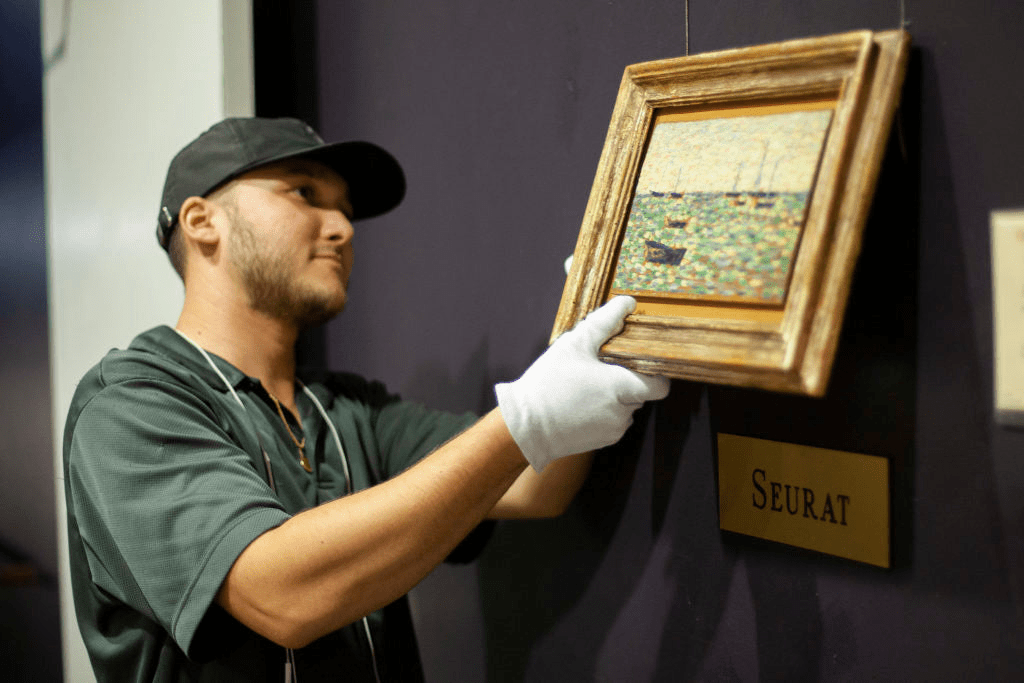Displaying artwork in a professional and pleasing manner is an art in and of itself. If you’re looking to replicate the joyful feeling of stepping into an art gallery or museum within your home, read on for an expert’s guide on ways to display your fine art collection.
How to Display Artwork

Purchasing a new art piece is always exciting, but deciding where to place your newest acquisition can be challenging. If your collection is already expansive, it may be difficult to determine which artworks should be displayed most prominently. Conversely, if this is your first time purchasing original art, you may be wondering where to place your painting for maximum impact. Luckily, the M.S. Rau design and art handling team has years of experience in placing important works within our clients’ homes, and can guide you through the best ways to display artwork.
4 Tips for Displaying Art in Your Home
- Pay attention to the interaction between furniture and art: Choosing furniture for your home in a similar style or period as your preferred artwork can help you achieve your overall interior design goals. If you’ve chosen a regal, sophisticated antique portrait, something as simple as an antique desk can help accentuate your art in ways that might not be obvious.
- If you’re stumped, consider a custom design: Sometimes rare art can present a unique challenge that defies traditional expectations. Whether it’s a three-dimensional painting or an abstract masterwork best viewed from a distance, the unique needs of your art and your home could require a custom design. M.S. Rau provides in-house design services perfectly tailored to your artwork and personal style.
- Choose frames that compliment your style: If your newest painting features an elaborate, ornate frame that clashes with your minimalist style, reframing may be the right choice for you. Always consult with an expert to select a frame that will complement your home, while also protecting the painting from any damage.
- Get a second opinion: Whether it’s your interior designer or a close friend, invite someone over to your house and see how they react to your new art display. Is the piece immediately noticeable, or does it fade into the background? Sometimes all it takes is a fresh perspective to discover the best possible ways to display art!
Lighting
Obtaining the proper lighting for your artwork allows original paintings to shine, while direct sunlight can cause damage to paintings. If you’re concerned about the potential damage of UV rays, consider replacing any normal glass with museum glass, which can block 99% of incoming light.Dimension in art can make choosing the perfect lighting a challenge. For sculptures, you may need several lights placed at different angles to prevent shadows.
Spacing
Giving an artwork the proper space to shine (whether on a blank wall or one with existing art) depends on the artwork’s style and the design of your home. If you’re looking for the professional, museum-quality viewing experience, each artwork should be hung at eye level. Displaying artwork at eye level draws in viewers, but getting the placement right may require a bit of math. The center of your piece of hanging art should hang 63 inches from the floor, so use a tape measure and follow these steps for the perfect placement!- Measure the height of your painting and divide that number in half.
- Turn the painting over and measure the distance between the top of the frame and the hanging hardware. For pieces wired on the back, make sure to pull the wire taut towards the top of the frame to ensure accurate placement on the wall.
- Subtract that number from the half height of the piece that you calculated in step one.
- Last, add 63 inches to this new number, and that is where your nail, screw or other hanging hardware should go into the wall.

Recent maximalist trends have brought the “Salon style” back into fashion, also referred to as a gallery wall by some interior designers. This style allows for multiple artworks hung closely together. The name “Salon style” refers to the famed exhibitions held by the Academie des Beaux-Arts in Paris, where works from the most promising artists were displayed. Dozens of works in the Academic style crowded the walls of the exhibitions, including the above painting which depicts the exhibition in the 1885 Paris Salon.

If you’re combining multiple artworks on the same wall or even within the same room, pay close attention to how the pieces interact with each other. Similar color palettes and moods can create a cohesive look. Decorating with antiques can also help bring two different artworks into conversation with one another. For example, if two artworks in a room’s display space are from different artistic periods but both by French artists, an antique vase from famed French glassmakers Rene Laliqué or Émile Gallé could bring unity to your design.
How to Display Paintings

When it comes to hanging artwork, remember to handle your framed art collection with care, and ask for assistance when repositioning large paintings.
How to Display Sculpture

When displaying sculpture within the home, first consider how your sculpture is intended to be viewed. If the sculpture has an unworked side, it should be placed against a wall. However, if the work is sculpted in the round, it can be separated from the wall to allow viewers to see every angle. In a similar vein to paintings, sculptures may also benefit from being viewed at different heights, which may require adding a pedestal. If your sculpture is very small, consider placing it on a piece of antique furniture to raise it to eye level.
How to Care for Your Artwork
Paintings and sculptures require special care to maintain their beauty for centuries to come. Every few weeks, use a clean, lint-free duster to remove any debris lingering on the surface of your paintings. If you feel your artwork would benefit from a deeper clean, reach out to an art conservator in your area who will be able to safely clean your painting without any damage to the original work. Never attempt a deep clean on your artwork at home, as the techniques and products used for cleaning paintings are highly specialized and require dedicated training.
Showcasing Your Finest Pieces








